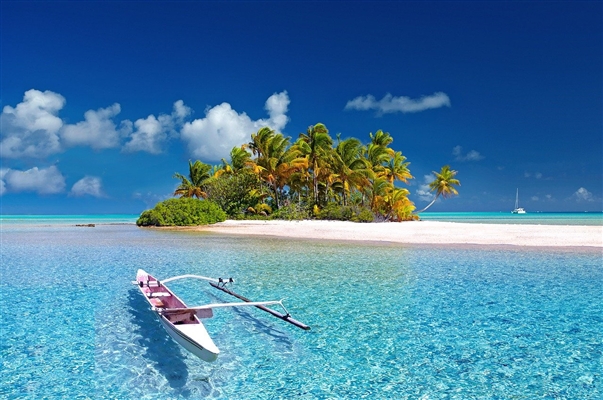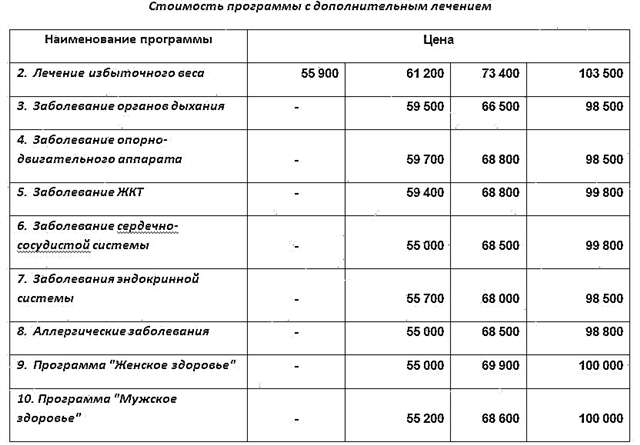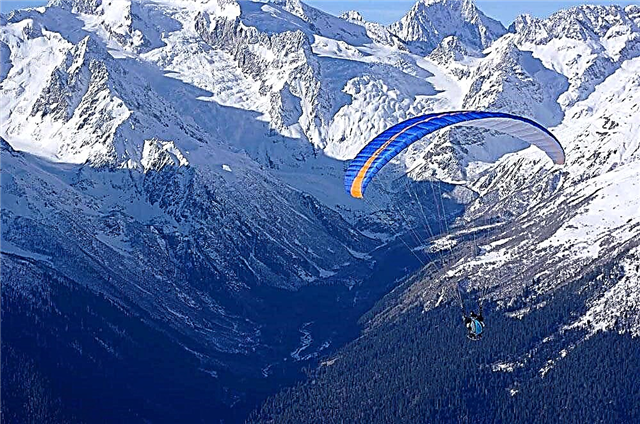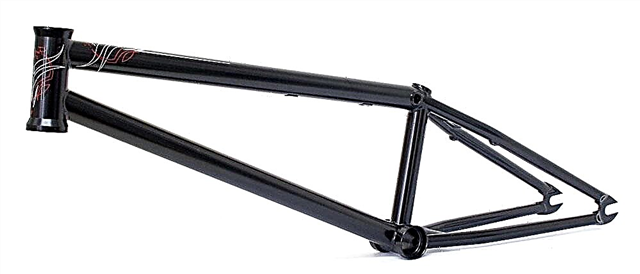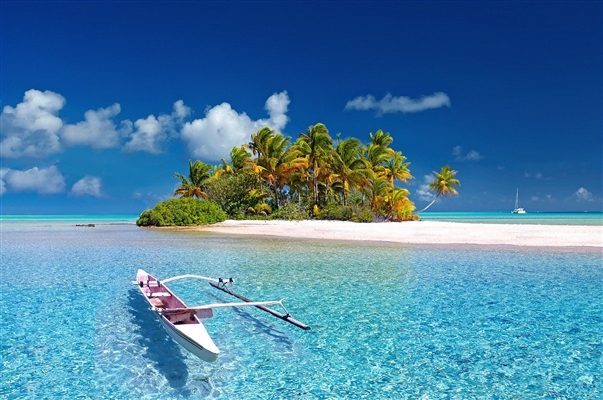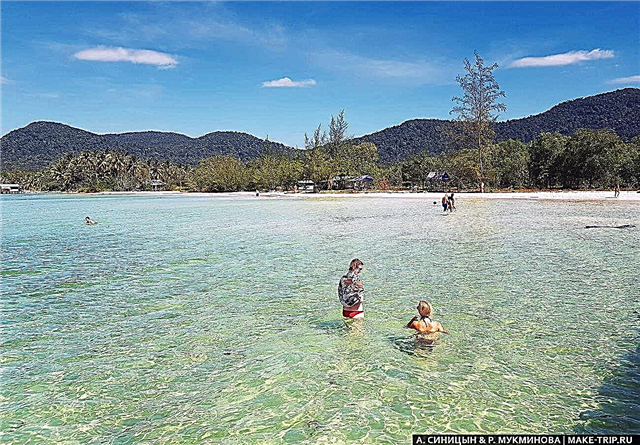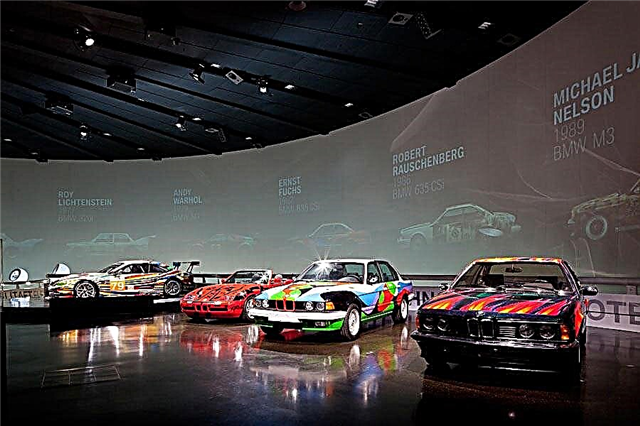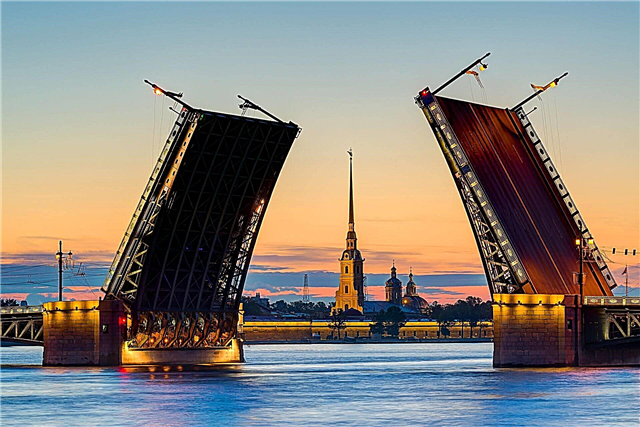St. Petersburg is almost the main tourist center of Russia. For three centuries, its appearance has been shaped by world-famous architects, sculptures and engineers. Almost any object of the city is involved in historical events or is a monument. The Neva River is a natural decoration of the city, which largely shaped its appearance. Its embankments and adjacent facilities are a place for many hours of walking.
It is worth visiting not only the city itself, but also the surroundings, including Tsarskoe Selo, the forts of Kronstadt and Peterhof. The famous St. Petersburg White Nights will give an unforgettable experience - tourists will not have a chance to meet such a phenomenon anywhere else. Below we have provided a list, photos with names and descriptions of the best sights of St. Petersburg. He will help you plan routes and choose excursions to explore the top places of the city in 3-5 days.
Palace and park museums-reserves of St. Petersburg
The famous palace and park ensembles of St. Petersburg are the most visited tourist places in the vicinity of the city. Millions of tourists from all over the world come here every year.
Palace and park ensemble "Peterhof"
The former imperial residence is located on the shores of the Gulf of Finland. The palace and park ensemble was formed over the course of two centuries. The Lower and English parks, as well as the Upper Garden, were completed in the 18th century, and the rest of the objects were completed later. The Peterhof fountain system is one of the largest in the world. It includes over 150 working fountains. The entire complex is recognized as a UNESCO World Heritage Site.

Great Catherine Palace
Part of the Tsarskoye Selo Museum-Reserve in Pushkin. The palace was erected at the beginning of the 18th century during the life of Catherine I. Later it was rebuilt in the late Baroque style. During the Second World War, the complex was seriously damaged. The amber room was completely lost, and the surrounding buildings were extensively damaged. By the 300th anniversary of St. Petersburg, most of the restoration work has been completed.

Museum-reserve "Pavlovsk"
The palace and park ensemble of the late 18th and early 19th centuries is the former residence of Paul I. The area of the park surrounding the palace is 600 hectares, which makes it one of the largest in Europe. Since the project has been finalized over 50 years, it has several authors. There is a mixture of styles, although neoclassicism prevails in architecture. In 1990, Pavlovsk was included in the UNESCO list of cultural heritage sites.

Palace and park ensemble "Oranienbaum"
It is located in the city of Lomonosov, which is 40 kilometers from St. Petersburg. The complex includes parks and palaces of the 18th century, as well as bridges, sculptural groups, and an artificial waterfall. The lead architect of the project is Johann Schedel. Most tourists are attracted by the empress's dacha: the rooms were painted by Giambattista Pittoni, one of the most famous Italian artists of his time.

Museum-reserve "Gatchina"
The history of the palace and park ensemble in the city of Gatchina begins in 1765, when Catherine II presented these lands to Count Orlov. A large palace and the country's first landscape park were built on an area of 146 hectares. The locality changed owners, and everyone made changes to the design. After the revolution, a museum was opened here. At the beginning of the XXI century, restoration work began, which continues to this day.

The most interesting and beautiful places
It is worth starting your acquaintance with the city from these sights; these are its main business cards and the most popular tourist attractions.
State Hermitage
It is one of the most famous museums in the world. The collection exceeds 3 million exhibits. Among them are sculpture, painting, graphics, works of applied art, coins and archaeological artifacts. The main building of the museum (there are 6 of them) is the Winter Palace - a former royal residence. The Hermitage was created on the basis of the private collection of Catherine the Great. The museum was opened to the general public only at the beginning of 1852.

Palace Square
The main square of the city. Its ensemble was formed in the second half of the 18th and the first half of the 19th century. Along the perimeter of the square there are: the Winter Palace, the General Staff Building and the Headquarters Building of the Guards Corps. In the center, in 1834, the Alexander Column was installed. Its height is 47.5 meters. At the top there is a sculpture of an angel with a cross. The column was created in honor of the victory of Alexander I over the troops of Napoleon.

Peter-Pavel's Fortress
The fortification on the Hare Island is considered a starting point: the formation of the city as a whole began with its construction. The fortress was never used for defense. But within its walls was a prison. Now the fortress is part of the History Museum. The main points of interest are the Peter and Paul Cathedral, the Museum of Cosmonautics and Rocket Technology, the monument to Peter I. Every day at noon, a signal cannon is fired from the bastion.

Nevsky Prospect
It stretches from the Admiralty to the Alexander Nevsky Lavra. These are the most interesting 5 kilometers in the city. Every building here is a monument of architecture or history. Therefore, the avenue is included in the list of UNESCO World Heritage Sites. Key attractions include: Gostiny Dvor, Alexander Nevsky Lavra, Anichkov Palace and Anichkov Bridge with sculptures by Klodt, Eliseevsky Shop, Kazan Cathedral, Alexandrinsky Theater.

Summer garden
The very first garden in the city. It was laid down by Peter the Great on the banks of the Neva. It was conceived as a royal residence, and the monarch personally supervised the construction. The park area was characterized by a symmetrical layout that was fashionable at that time, as well as a commitment to clear boundaries and straight lines. The garden is filled with marble sculptures and fountains. Even from the name it is clear that it is best to visit it in the summer.

New Holland Island
The only man-made island in the northern capital. The popular recreation area offers tourists and citizens a wide program. Local contemporary art exhibitions are often free. Here you can try different cuisines of the world or attend interesting lectures by appointment. There are 11 federal monuments on the territory of New Holland.

Cruiser Aurora"
Launched in 1900 and went through three wars. Although the ship did not take a direct part in the revolutionary events, it was the volley from the Aurora that became the signal for the storming of the Winter Palace. Since 1957 it has been a museum ship. Anyone can climb aboard, either as part of an excursion group or independently. The exposition tells about the combat past of the cruiser.

Spit of Vasilyevsky Island
A unique example of the harmony of river landscapes and urban architecture. The cape is washed by Bolshaya and Malaya Neva. The iconic sights of St. Petersburg are concentrated on a relatively small piece of land: the Kunstkamera, Rostral Columns, the Stock Exchange building, the Zoological Museum, the building of the Academy of Sciences, and the building of twelve colleges. The symmetry of the Arrow is emphasized by the Stock and Dvortsovy bridges.

Peter the Great Botanical Garden
One of the oldest in Russia. It has been located on Aptekarsky Island since the beginning of the 18th century. Initially, according to the decree of Peter I, medicinal herbs were grown here. A century later, the territory was expanded, more exotic plants from different latitudes were added and the profile of the garden was changed. The park and outdoor plants are available to all visitors. The greenhouses are open for excursion groups only.

The ensemble of the Smolny Monastery
Created by the architect Bartolomeo Rastrelli in the middle of the 18th century. The complex of interconnected buildings forms a kind of wall around the Smolny Cathedral.The buildings are symmetrical. Not all initial plans have been implemented, both due to lack of adequate funding, and due to the uselessness of many details. Now the monastery is not functioning, and its building is occupied by the faculties of St. Petersburg State University.

Moscow square
The largest square in the city and one of the largest in Europe. The current name appeared only in 1960. Of the old iconic buildings, the House of Soviets is worth highlighting. A monument to Vladimir Lenin is erected next to it. In 2006, the square was decorated with singing fountains. On holidays and weekends, a classical piece of music is played every twenty minutes.

Palace bridge
Drawbridges are the hallmark of the city. The Palace Bridge is the most famous of them; it is often placed on postcards. It is located in the central part of St. Petersburg. Consists of five spans. Length - 250 meters, width - almost 28 meters. It has existed in its current form since 1916, although a bridge of a different design was in this place before. It was closed several times for restoration. The latter ended in 2013.

Stadium "Gazprom Arena"
The football unfinished construction was laid in 2007, and the first match was played 10 years later. During this time, there have been many scandals related to the object, and many memes and jokes have also appeared. However, the final result exceeded all expectations of the public: the stadium became a decoration of the country. Zenit plays home games here. The capacity is over 60 thousand spectators. The stadium hosted the matches of the 2018 World Cup.

Saint Petersburg metro
The deepest in the world in terms of the average depth of the stations. This is due to the peculiarities of the city built on water: there was a need to deepen the metro in order to make the structures stronger and more durable. The first line was opened in 1955. Currently, 5 metro lines are active, which unite 72 stations. A distinctive feature of the St. Petersburg metro is the presence of stations with platform sliding doors.

Roofs of St. Petersburg
Excursions to historical sites are known to everyone. But not every tourist has had a chance to visit the “program” of the northern capital, which is gaining polarity - to walk with an experienced guide on the city roofs. Such a pastime allows you to look at the city from a different angle in the literal sense of the word. In addition, the roofers have a lot of interesting stories about the secret corners of St. Petersburg.

Embankments of St. Petersburg
Walking along the embankments of the city will allow you to get acquainted with the main attractions. Most of the iconic objects either go out to the water, or are located nearby. Each embankment has its own story. For example, for the construction of the Palace Embankment, the bank was fortified. And the Promenade des Anglais often changed its name. The current one (it is also the first) was returned to the visit to St. Petersburg of Queen Elizabeth II.

Forts of St. Petersburg in Kronstadt
In St. Petersburg and the surrounding area, forts began to be erected from the moment the city was founded. The construction of fortifications did not stop until the fall of the monarchical system. Most of the forts are concentrated around Kronstadt. Kronslot became the first of them. During the Crimean War, the defensive line of the forts did not allow enemy ships to approach the required distance for an attack.

Gardens and parks of St. Petersburg
There are dozens of beautiful landscaped parks in the city. Here you can relax away from the hustle and bustle of the city. Spend time with your family, walk along the well-groomed alleys, relax in a cafe or just sit on a bench.
Park of Culture and Rest named after S. M. Kirov
Broken on Elaginsky Island at the end of the 18th century. The natural complex of Elagin Island is a natural monument. Before the revolution, there was an imperial residence here. The park has a classic look and belongs to the English style. The filling of the territory is more than rich and varied: grottoes, canals, ponds, bridges, gazebos, monuments, a mini-zoo, a boat station, shopping pavilions. An exposition of the Museum of Russian Decorative and Applied Arts and Interior is on display in the nearby Elaginsky Palace.

This is interesting: Top 35 - protected areas of St. Petersburg.
Seaside Park Victory
Laid down in 1945 on Krestovsky Island in honor of the country's naval victories. The area is 168 hectares. Until 1999 (until a new metro line was opened), it was mostly possible to get here not by tram. Significant objects of the park: alley of sister cities, where delegations plant oaks, a pond with a swan nursery on the shore, a stele in memory of the foundation of the park, an entertainment complex "Divo-Ostrov".

Tauride Gardens
Smashed around the palace of the same name. Recognized as a monument of gardening art. Several monuments have been erected on the territory, including the "Young Heroes of the Defense of Leningrad" and the composer Pyotr Tchaikovsky. Since the middle of the last century, special areas for recreation with children have appeared in the park. In addition to sports and playgrounds, there is an "Game Library" and a figure skating school.

Moscow Victory Park
Laid down in 1939, but the project was changed in 1945, timed to coincide with the victory in the Great Patriotic War. The area is 68 hectares. Memorial sites: Alley of Heroes, Memorial Sign "Trolley", Memorial Alley of Memory, Rotunda in memory of the victims of the blockade. A chapel was built in 2010. There are enough places to rest in the park. Depending on the season, there are boat and catamaran rentals, an ice rink, and attractions.

Park of the 300th anniversary of St. Petersburg
The youngest park in the city. The area is 54 hectares. Initially, the territory was one third larger, but it was cut, and almost 30 hectares were given for building. The park was created for the anniversary of St. Petersburg, so there is a lot of symbolism here. For example, exactly 300 trees have been planted, and the main objects (fountains, a column, stylized as a lighthouse) refer to urban history. The park is still being replenished with new attractions.

Aleksandrovsky Park in the Petrogradsky District
One of the first public parks in the city covers an area of more than 14 hectares. Founded at the beginning of the 19th century, the park has changed a lot in our time. A pedestrian zone has appeared, hundreds of trees and bushes have been planted, old lighting has been replaced. In 2011, the “Mini-City”, a collection of miniatures of the main sights of St. Petersburg, was opened on the territory of Aleksandrovsky Park. They are made on a scale of 1:33.

The best museums of St. Petersburg
The main museum treasures of the country are kept in the museums of St. Petersburg. Famous museums include the Kunstkamera and the Russian Museum. There are also small, but well-known cult museums, such as "Kotelnaya Kamchatka".
Kunstkamera
During the "grand embassy" Peter I learned about the existence of "rarity cabinets" at the homes of monarchs and nobility in Europe. He took over the idea and ordered such a meeting to be organized at his court. The Kunstkamera project was first mentioned in 1714, and the construction of the current museum building was completed only 20 years later. Since then, the collection of anatomical anomalies has grown. To it were added exhibits telling about the peculiarities of different peoples and territories.

Don't Miss: 30 Best Museums in St. Petersburg.
State Russian Museum
In 1895, a decree on the creation of the Russian Museum was signed by Nicholas II. After 3 years, the first visitors were able to familiarize themselves with the exposition. Currently, the funds exceed 410 thousand storage units. Among the exhibits: paintings, prints, sculptures, objects of decorative and applied art, icons and archival materials. The museum occupies several buildings in the central part of the city.

Erarta Museum
The largest private museum in the country and the first museum of contemporary art in St. Petersburg. Opened in 2010. The permanent exhibition includes about 3 thousand pieces of art. Among them are painting, sculpture, audiovisual presentations and installations. Temporary exhibitions, theatrical performances, concerts are held regularly. The museum aims to discover new names in art.

Artillery museum
The history of the museum begins with the creation of an armory house by Peter I in 1703. The collection of war trophies and artifacts was supposed, according to the emperor's idea, to remind descendants of the victories of Russia. The exposition occupies 3 floors. The collections are divided by themes: engineering troops, artillery of different years, outstanding personalities, and more. In addition, large guns and modern artillery installations are located outside the walls of the open-air museum.

Central Naval Museum
One of the largest museums in the world with a maritime theme. Founded in 1709, which makes it one of the oldest museums in Russia. Has several branches. The most famous of them is the cruiser Aurora. The funds include 700 thousand exhibits: flags, paintings, documentation, ship household items, drawings, uniforms, medals. But most of all visitors to the museum are attracted by models of ships, made with jewelry precision.

Faberge Museum
Opened in 2013. It was created in order to preserve the heritage of the jeweler Carl Gustav Faberge and to return the lost values to Russia. The collection is housed in 11 halls of the Naryshkin-Shuvalov palace on the Fontanka embankment. The main exhibits are 9 Easter eggs created for the Russian imperial family. In total, there are 4 thousand art objects in the museum's funds. Among them are not only the works of Faberge, but also those of his contemporaries.

Club-museum "Boiler room Kamchatka"
A real coal-fired boiler house, converted into a museum in 2006. Here from 1986 to 1988 he worked as a fireman Viktor Tsoi. Local concerts have become legendary. The film "Rock" was filmed in the boiler room. After the death of the musician, fans turned this object into one of the memorials. A visit to the museum with Tsoi's personal belongings is free. In the evenings, there are sometimes events for which you need to buy tickets.

House of Peter I
The emperor personally supervised the construction of the Peter and Paul Fortress. Since he had to live somewhere, in a short time a small house was built specially for Peter the Great - the first completed construction of the future city. There are only three rooms inside, which have now become a museum. The furnishings remained unchanged, only the personal belongings of the monarch were added and some details were of that time.

Main theaters of St. Petersburg
There are more than 100 theaters of different genres in the city. These are musical theaters, opera and ballet theaters, drama theaters and puppet theaters.
Mariinsky Theatre
One of the leading musical theaters in the world. Founded at the end of the 18th century, and the building was built in 1860. From the first days of its existence, the repertoire has been dominated by classical works, although there are also experiments. At the end of the season, the stage of the Mariinsky Theater begins to receive world-famous touring groups. The theater troupe also travels to other countries with their iconic performances.

Alexandrinsky theater
The oldest national theater in the country. Named after the wife of Nicholas I. In 1832, the long-standing troupe moved to a new building on Nevsky Prospekt. Six snow-white columns, statues of muses in niches, Apollo on top - all these details emphasize the majesty of the structure and fully correspond to the theme of the building. Already in our time, a new stage has been opened in the theater.

Tovstonogov Bolshoi Drama Theater
Maxim Gorky had a hand in the creation of the theater in 1918. The troupe received at its disposal the Great Hall of the Conservatory building. Performances based on classical works were shown every day. In the off-season, the artists toured the country. Eminent artists, including Alisa Freindlich and Oleg Basilashvili, began their careers here. Academic status was assigned to the theater in 1964.

Churches and cathedrals of St. Petersburg
There are hundreds of active religious buildings in the city. Among them are Orthodox churches and cathedrals, parish and cemetery churches, chapels. You can also see Catholic and Protestant churches, Armenian churches, Old Believer churches. Below is a photo and description of several famous Orthodox churches.
Saint Isaac's Cathedral
The largest Orthodox church in the northern capital was lit up in 1858. It was built for almost 40 years according to the design of Auguste Montferrand. The interior decoration is dominated by marble of different shades. The facade is decorated with numerous sculptures and ornaments. The dome has an observation deck overlooking the historic part of the city. Although services are held in St. Isaac's Cathedral, its official status is a memorial museum.

Church of the Savior on Spilled Blood
The construction site - the embankment of the Griboyedov Canal - was not chosen by chance. Here Alexander II was mortally wounded. The construction began during the reign of his son Alexander III, and the lighting fell on the era of Nicholas II. The temple turned out to be bright, both inside and outside. The decoration uses mosaics, Ural gems, gilded copper and other non-trivial materials. Services are held, but there is also a museum status.

Kazan Cathedral
Built on Nevsky Prospekt in the Empire style. Consecrated in 1811. The main shrine is the revered list of the miraculous icon of the Kazan Mother of God. The Patriotic War of 1812 brought the cathedral a new status - a monument of Russian military glory. War trophies began to be stored here, such as keys to captured cities or enemy banners. The commander Mikhail Kutuzov was buried in the temple.

Nikolsky Naval Cathedral
Built in the middle of the 18th century in the Elizabethan Baroque style. Named after Nicholas the Wonderworker. The country's first Orthodox church for sailors. Its bright blue façade walls, white columns, window edging and stucco, and the cathedral's golden domes are visible from afar. Unlike many other religious sites, the temple was not closed even after the fall of the monarchy.

Peter and Paul Cathedral
The predecessor of the cathedral is the wooden church of Peter and Paul. The current building was laid in 1712. Features of decoration and decoration: carved iconostasis with gilding and altar canopy, painting on the walls. The theme of the painting is not only church-based, which is a rarity for Orthodox culture. War trophies, including banners, were kept in the temple. At the beginning of the last century, the artifacts were confiscated and transferred to the Hermitage.

Naval Nikolsky Cathedral in Kronstadt
The last of the naval cathedrals built before the fall of the monarchy. It was erected in the period from 1903-1913 in Kronstadt. From the moment it was closed after the revolution, an observation post, a club, a concert hall, and a branch of the museum were located within the walls of the cathedral. The building was returned to the church at the beginning of the 21st century. The first liturgy in 75 years was served in 2005. In 2013, it received the status of the main naval temple of Russia.

Monuments and monuments of St. Petersburg
The most famous historical and modern monuments and monuments of the city.
Monument "The Bronze Horseman"
The monument to Peter the Great was erected on Senate Square in 1782. Cast from bronze, and the name "copper" appeared because of a poem by Pushkin. The height is over 10 meters. The author of the project is Etienne Falconet. He could not attend the opening due to palace intrigues. By order of Catherine II, the inscription "Peter I Catherine II" appeared on the monument. So the empress wanted to emphasize that she is the "second" immediately after the last tsar of all Russia.

Recommended: 35 famous monuments of St. Petersburg.
Monument to Catherine II
It has been located on Ostrovsky Square since 1873. The author of the project is Mikhail Mikeshina. The height of the bronze statue together with the granite pedestal is about 10 meters. There is a lot of symbolism in the monument. For example, the figure of Catherine II is much higher than the figures of the prominent figures of the era surrounding her, which emphasizes the place of each of them in the history of the country. Vandals periodically steal or damage the "accessories" of the nobility: most often Suvorov's sword suffers.

Rostral columns
Erected on Vasilievsky Island at the beginning of the 19th century. Originally they served as port lanterns and were used until 1885 during fog or at night. The author of the project is Jean-Francois Thomas de Thomon.The height of each column is 32 meters. Inside they have spiral staircases, which have been preserved in good condition. In the middle of the last century, gas was supplied to the columns and they are turned on only on special occasions.

Narva Triumphal Gates
Originally, an arch made of wood and alabaster was built on this site. She became the last project of Giacomo Quarenghi. The Triumphal Gates were intended to meet the troops that won the Patriotic War of 1812. The structure quickly fell into disrepair and was replaced by a capital stone arch. The height of the structure is 23 meters, the width of the passage is 15 meters. The upper hall of the interior has been converted into a museum.

Monument to Nicholas I
Installed on St. Isaac's Square in 1859. The project has two authors. The equestrian statue of the emperor was created by Pyotr Klodt, and the pedestal was occupied by Auguste Montferrand. The monument stands on the same axis with the monument to Peter I. They are separated by St. Isaac's Cathedral. In Soviet times, the question of dismantling the sights was raised, but the sculpture of Nicholas I remained in its place. The monument is dilapidated, so it will be restored soon.

Sculpture "Chizhik-Pyzhik"
A comic song about the adventure of a little bird on the Fontanka led to the appearance of this monument. Its height is 11 centimeters, and its weight together with the pedestal is 5 kilograms. The small size and symbolism of the sculpture led to the fact that it was abducted several times. There is a sign: you need to throw a coin in the direction of the "chizhik", and if it does not fall from the pedestal, then the person will be lucky.

Monument to A.S. Pushkin
Installed on the Arts Square opposite the Russian Museum in 1957. Cast from bronze. The height with a granite pedestal is over 7 meters. The sculptor Mikhail Anikushin had to go through many options. He created dozens of graphic and sculptural portraits of the writer before making his final choice. Such a scrupulous approach was associated with the need to fit the monument into the already established architectural style of the area.

Sphinxes on the University Embankment
In 1825, during excavations in Egypt, sphinxes of pink Aswan granite were discovered. They are dated back to the XIV century BC. The history of buying sculptures stretched for several years, but in 1832 they still arrived in St. Petersburg. The Sphinxes were installed on the University Embankment. Scientists were initially opposed, as they considered the local climate destructive for such fragile monuments.

Memorable sign to the ship "Poltava"
Dedicated to the first Russian 54-gun sailing battleship of the 4th rank. A reduced copy of "Poltava" is placed on a pedestal and installed on Voskresenskaya embankment in 2015. The height is about 10 meters. The monument is made with a high degree of detail. The bas-reliefs on the sidewalls of the pedestal describe scenes of naval battles of the Russian fleet during the reign of Peter I.

Famous buildings and houses of St. Petersburg
St. Petersburg is famous for its architectural sights, there are thousands of them. Beautiful buildings and structures can be seen on many streets and in different parts of the city.
House of the company "Singer"
Now this majestic corner building on Nevsky Prospekt is known to many as the "House of Books". However, at the beginning of the twentieth century, it was built for the American Singer sewing company. The area of internal premises is 7 thousand square meters. The steel frame of the building - an advanced technology for the time - made it possible to make large windows and facade decorations: sculptures, wrought bronze ornaments and a tower with a globe on the roof.

Eliseevsky store
It stands at the corner of Nevsky Prospect and Malaya Sadovaya. First opened to buyers at the beginning of the 20th century. Throughout its history, it has experienced ups and downs, including an almost complete closure in 2000-2010. The front of the store has been repeatedly restored. It is decorated with thematic sculptures, a memorial plaque to merchants Eliseev, stucco molding. The interior decoration is bright, and large windows and showcases visually enlarge the already rather large room.

Main Admiralty building
On the island between Moika and Neva, construction of a shipyard began in 1704. At the same time, it also performed a defensive function. During the reign of Peter I, 262 warships were launched here. Shipbuilding gradually came to naught, and the building of the Main Admiralty was completely changed at the beginning of the last century. The facade was decorated with 56 statues, 11 bas-reliefs, numerous fragments of stucco molding.

"House at 5 corners"
The five-story building with a turret appeared on the corner of Zagorodny Prospekt and Rubinstein Street in 1913. He replaced the building that belonged to the Lapin merchants. Architect Alexander Lishnevsky created his project in the style of classicism, mixed with modern. The first two floors, with a more modest finish, were allocated for shops and a cinema, and the upper ones for spacious apartments for wealthy people.

Business complex "Lakhta Center"
The construction of this social and business center took 7 years. The work was completed in 2019, and a little later the headquarters of Gazprom was moved here. Around, practically from scratch, a transport infrastructure was created, including new highways and interchanges. The complex includes the tallest skyscraper in Europe and a building, which is divided into two parts thanks to the atrium. The height of the Lakhta Center is 462 meters.

Palaces of St. Petersburg
Among the beautiful buildings, it is worth highlighting the princely and imperial palaces, which have now become museums. Their halls breathe history, intrigues were woven here and fateful decisions were made.
Beloselsky-Belozersky Palace
Another name is Sergeevsky (named after the younger brother of Alexander III). Built by order of Princess Beloselsky. The family led a secular life. Receptions and balls were often held in the palace. They were attended by members of the royal family. Subsequently, the emperor bought the palace and presented it to his brother for the wedding. Now the building houses the Committee for Culture, the Historical Wax Museum, a cultural center and a concert hall.

Marble palace
Located in the historical part of the city. Built in the second half of the 18th century in the classicism style. The monarchs passed the palace from hand to hand, but no one really lived here, so the building fell into disrepair in less than 100 years. Now the palace has been restored and given over to a branch of the Russian Museum. A monument to Alexander III is erected in front of the eastern facade. The former service wing houses a correspondence technical university.

Alexander Palace in Pushkin
Built as a gift to the future Emperor Alexander I. The project was completed in 1796. There is a park with a lake around. During its existence, the palace changed its destination. Representatives of the Romanov family, foreign delegations, and noble persons lived here. The interior decoration, as well as the decoration of the rooms, has practically not been preserved. After the restoration, in our time, the building was transferred under the control of the Tsarskoye Selo Museum-Reserve.

Monplaisir Palace in Peterhof
The translation of the title is “my pleasure”. An architectural monument of the 18th century. Peter I personally chose the site for the palace in Peterhof, and also gave instructions on the layout and interiors. The project was completed by 1723. Now in Monplaisir there is a collection of paintings by European artists, Chinese porcelain, Dutch faience, as well as some personal belongings of the emperor and diplomatic gifts.

Mikhailovsky castle
At the end of the 18th century, Paul I ordered to build a new residence in the center of St. Petersburg. The monarch suspected the entourage of wanting to stage a coup, so he sought a safe haven for himself. He was killed in this castle in 1801. Now the architectural monument has been transferred under the control of the Russian Museum and is open for visits. The castle courtyard is decorated with sculptures of Paul I and Peter I.

Summer Palace of Peter I
It was erected in the Summer Garden by order of Peter I. It was intended only for living in the warm season. This imperial residence was not meant to host a large number of guests.The 14 rooms of the palace housed the royal family's bedrooms, servants' rooms, dressing rooms, an office, a kitchen and a dining room. The interior has survived to this day. Since 1934, there has been a historical and household museum.

Interesting bridges of St. Petersburg
The territory of St. Petersburg is cut by dozens of rivers and canals. Hundreds of bridges have been thrown across them. The most famous is the Dvortsovy drawbridge. Many others have an interesting history or are decorated with beautiful sculptures.
Bank Bridge
Connects Kazan and Spassky Islands. The name was given to the bridge because of the proximity to the Assignation Bank. The length is about 20 meters, the width is less than 2 meters. The bridge is pedestrian and chain, in its current form has existed since 1826. The author of the project is Wilhelm von Tretter. Winged lions - one of the symbols of St. Petersburg - adorn the bridge on both sides. Their creator is the sculptor Pavel Sokolov.

Lion bridge
One of the three surviving pedestrian bridges in St. Petersburg. It was thrown across the Griboyedov Canal and connects the Spassky and Kazansky islands. The length is less than 23 meters, the width is about 2 meters. The bridge got its name from the sculptures of lions by Pavel Sokolov, installed in pairs on both sides. The facility was closed several times for reconstruction. The latter is dated 2018 and affected only the restoration of lions.

Anichkov bridge
Named after the engineer of the Petrine era, Mikhail Anichkov. The first bridge appeared on this site in 1716. Later, the wooden structure was replaced with a brick one and expanded. The roadway width of the bridge is 32 meters, the pedestrian width is 6 meters. The Horse Tamers sculptures adorn the bridge on both sides. Peter Klodt was inspired to create the statues installed at the entrance to the Champs Elysees.

Children's attractions of St. Petersburg
Among the main places where you can go with children, it is worth highlighting the circus and the zoo. It will be interesting in the oceanarium and in the museum "Grand Model Russia".
Show Museum "Grand Model Russia"
Occupies a two-story building built in 1953. The museum is a miniature model of Russia. It is made on a scale of 1:87. The total area is 800 m². The project has been developed for 5 years. The fully-fledged museum opened in 2012. Every 13 minutes, an artificial change of day and night takes place above the layout. The movement of cars and railway transport is as close as possible to real traffic.

Saint Petersburg Oceanarium
It was opened in the shopping and entertainment complex "Planet Neptune" in 2006. The project of the aquarium was developed by Hannu Laitila, an architect from Finland. The 57 aquariums contain 4,500 fish, as well as aquatic animals and invertebrates. The volume of the main aquarium is 750 thousand liters. Sharks live here. From Tuesday to Friday evenings, they participate in a special show for visitors. And in the afternoon there is a performance with trained seals.

Leningrad Zoo
One of the northernmost zoos in the world. Founded in 1865 on the territory of the Alexander Park. The pre-revolutionary buildings have not survived, but the layout has remained unchanged. The zoo is divided into thematic sectors and pavilions. It contains about 3 thousand animals belonging to 665 species. Entertainment programs for children have been developed, and two contact zones with tamed animals have been created.

Bolshoi Saint Petersburg State Circus
The first stationary stone circus in Russia. The building was built in 1877. After the revolution, the circus became state-owned, and its founders, the Ciniselli family, left for Paris, where they died in poverty. In 2014, a major reconstruction began. The number of seats for spectators has decreased, but the hall has become much more comfortable. Work was carried out to strengthen the foundation and replace the dome. The renewed circus opened in 2015.

Monasteries of St. Petersburg
Separately, we note the monasteries - unique architectural objects and places of religious life.
Alexander Nevsky Lavra
The oldest and largest monastery in St. Petersburg. The status of a lavra was assigned to a male Orthodox monastery in 1797. The main relic of the monastery is the relics of Alexander Nevsky. In the 30s of the last century, workshops were opened on the territory of the abolished monastery. Monastic life was resumed here in 1996. Workshops were also opened: icon painting, jewelry, tin miniatures.

Ioannovsky monastery
Stands on the banks of the Karpovka River. The time of foundation is the end of the 19th century. This convent has a special status, making it subordinate directly to the synod or patriarch, and not to the local diocese. The project of the monastery in the neo-Byzantine style was created by the architect Nikolai Nikonov. After the revolution, the monastery was turned into a labor commune, and then liquidated. In the 90s, a revival began. The upper church was personally illuminated by Patriarch Alexy II.

Resurrection Novodevichy Convent
Laid down by order of Elizaveta Petrovna. The nuns were not sent here immediately, and in 1822 the monastery was closed. Its work was resumed under Nicholas I, 23 years later. Most of the buildings in the monastery belong to the Russian style. The Kazan Church stands out from the crowd: it was built in the neo-Byzantine style. The territory of the Novodevichy cemetery belongs to the monastery, where Tyutchev, Nekrasov and other outstanding people are buried.



